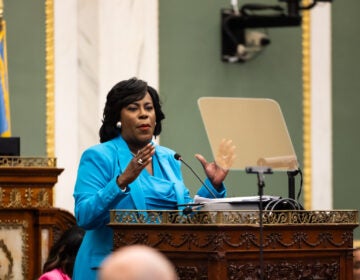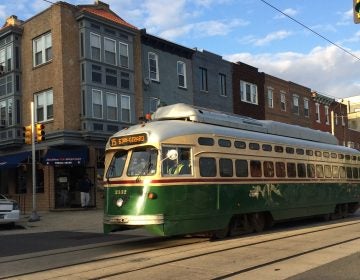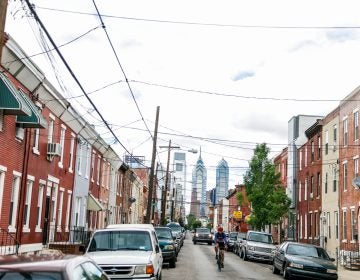Philly urban growth and design trends we want to take into 2020
Philadelphia is changing rapidly. How can we design smarter, more equitably, and more beautifully to improve the quality of life of our city’s residents?
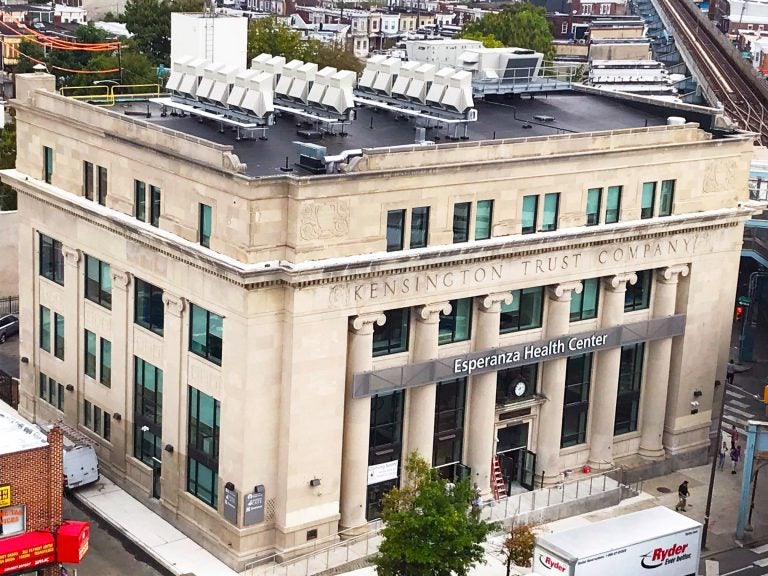
Esperanza opened a health center in a historic Kensington bank building in 2019. (Esperanza/Facebook)
That’s it, the better part of a decade is in the books for PlanPhilly. Another year of reporting from City Hall and city streets, enduring interminable council meetings, translating governmental jargon, and giving you the news shaping growth in our city’s neighborhoods.
But to cap it all off, we wanted to try something a little different.
Three hundred sixty-four days of the year, we try our best to report on all different perspectives when it comes to urban planning and development. But in this magical moment of resolutions and good tidings, we want to give you some of our own unvarnished opinions about what’s working and what’s not.
The following is a thoughtful list of trends, some encouraging, others troubling, we reported on over the past year. The list encompasses the stuff we hope to see more of in 2020 and that which we hope to bid goodbye.
Bring into 2020
Building beyond Center City
The new Esperanza Health Center earned praise this year for marrying the eponymous nonprofit’s social service mission with equitable development goals –– expanding medical and mental health services access through a $22 million world-class overhaul of a historic bank in the heart of Philly’s troubled Kensington neighborhood.
Observers remarked that they “can’t believe they’re in Kensington” upon visiting the new building. This is a comment on the project’s many admirable qualities but also a sad reflection on the fact that residents in Philadelphia’s outer neighborhoods have been conditioned by years of decline and municipal turmoil to operate in a perpetual mindset of austerity. Public services or amenities are expected to be mediocre, if they exist at all.
Today, new development and services often manifest as spillover from private-sector activity, from high-priced housing and retail to developer-built parks or services gleaned from business improvement districts instead of City Hall. But private development generally correlates with rising housing costs and increased rates of eviction, particularly affecting low-income residents and communities of color. And just as the feeding frenzy of market-driven development pushes some people out, housing and institutions in other neighborhoods with little value in the real estate market are left to slowly crumble.
The city, state, and federal government, along with private funders, should be eyeing more projects like Esperanza. Additional public funding is needed to fill the gaps left by shuttering private hospitals, aging housing stock, and the legacy of historic disinvestment while providing more equitable development and service provision across the city, not just downtown.
Esperanza’s health center and other neighborhood-minded projects — think Shift Capital’s Crown Can development, Jump Start Philly, and (time will tell) the city’s Rebuild program — offer proof that the average Philly neighborhood doesn’t have to accept second best.
More transit improvements like the 15th Street Station overhaul
Few public investments can hope to improve day-to-day life in the city for as many people as will be touched by SEPTA’s $28 million renovation of 15th Street Station, completed in October. The busiest stop on its busiest line, some 30,000 riders board at 15th Street daily, and many more transfer through to the Broad Street Subway or adjacent Regional Rail connections.
The ever-bustling Center City station opened in 1907 and still bore the marks of a 1970s-era renovation. The ’70s, of course, were long before the Americans With Disabilities Act of 1990 began mandating equal access for all transit users. Still, the fact that such a central station outside City Hall remained inaccessible decades later spoke volumes.
Thankfully, the new upgrade includes a pair of ADA-compliant street-level elevators, along with with new ramps, wider accessways, fresh tilework, public art, and, gasp, modern signage.
In truth, the work remains undone until SEPTA finishes the larger $146 million renovation of the decrepit City Hall transportation complex. Even so, the meat-and-potatoes station cleanup indicates SEPTA is moving in the right direction, particularly with the transformational
ADA improvements. Next on the wish list: getting SEPTA to actually clean its subway stations.
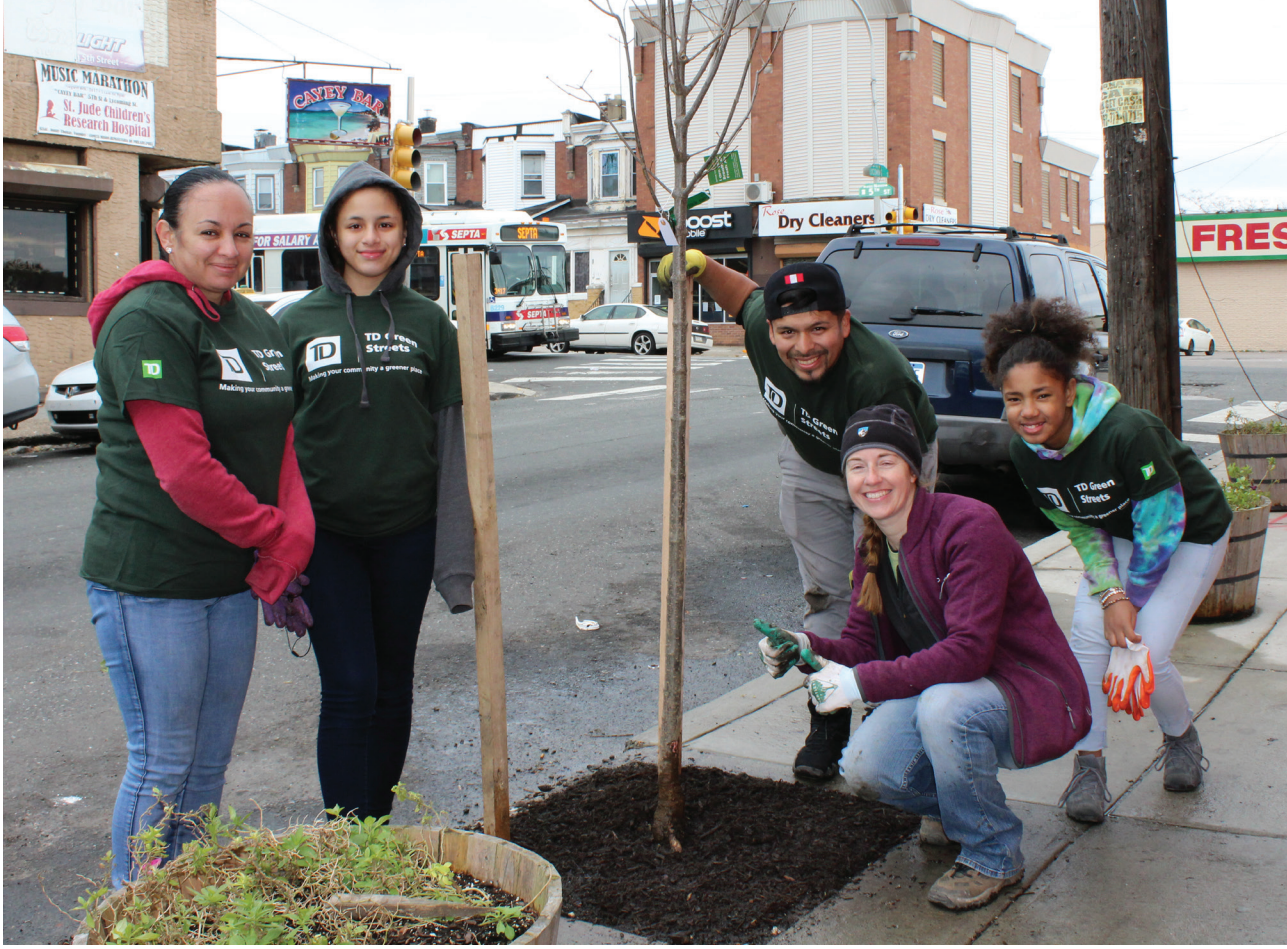
Lowering the temps by increasing Philly’s tree canopy
Trees cover only 20% of Philadelphia’s land, and it’s a severe equity problem. Lower-income neighborhoods are the areas that suffer the most from the lack of greenery — they’re hotter and “more vulnerable to the effects of extreme heat and heavy rains.” Pennsylvania Horticultural Society has been working for years in neighborhoods with community organizations to address this issue. In Hunting Park, where it can be 22 degrees hotter than in other parts of Philadelphia, PHS has partnered with the Hispanic community organization Esperanza on a year-long plan to cool down the neighborhood by planting trees and more.
In 2020, PHS is working with City Hall to expand the effort.
During the next five years, the city’s goal is to raise the tree canopy from 20% to 30% through a new initiative. If the urban forest plan splits up the work equally throughout the five years, then 2020 should come with a 2% increase in trees. Philadelphians are surely looking forward to it.
More monuments and statues that represent Philadelphia
From Frank Rizzo to Rocky, Philadelphia is covered in statues honoring white men. Monuments representing women, Black figures, and Philly’s native history have been practically nonexistent, but in 2019, some strides were finally made. In July, South Philly’s Smith Playground became home to “MVP” —the first-ever statue representing an individual African American girl. The statue is modeled after a real-life middle schooler and inspired by Philadelphia athlete Ora Washington, who was a basketball player in the 1930s.
Philadelphia, like the rest of the country, was built on Indigenous land. This year, on Indigenous Peoples’ Day, the city shed a neon light on the once-erased history of the Lenni Lenape tribe in Penn Treaty Park. “In Perpetuity” is a bright red neon quote, translated from the “Treaty of Friendship,” an agreement between William Penn and Lenni Lenape Chief Tamanend. The sculpture, which was initially created for Monument Lab back in 2017, is back up for now and reads, “As long as the creeks and rivers flow and the sun, moon and stars endure.”
Statues, sculptures, and monuments hold so much power — in what they represent and whom. Philadelphia is a city that is majority women and people of color, and its monuments should reflect that. We still have to deal with Frank Rizzo until 2021, but 2020 can be the year when we continue to move forward to have more sculptures that truly reflect the people that make Philadelphia special.
Let these trends die in 2019
Elite NIMBYISM
As is true everywhere, the Philadelphia neighborhoods with the greatest control over their destinies tend to be those with the most wealth. This often leads to a disparity of outcomes, in which communities that have the most money have a far greater say in hyperlocal planning and zoning than their counterparts elsewhere. In some cases, the disparities appear even greater, when a wealthy neighborhood’s plans for its future clash with the city’s goals for equitable development.
That’s what happened this year when Society Hill, one of the wealthiest neighborhoods in Philadelphia, clashed with the city’s Department of Planning and Development over a batch of bills Councilmember Mark Squilla introduced for neighborhood leaders. The legislation would craft a series of zoning rules for the neighborhood that would further set it apart from the rest of the city, including increases to parking minimums and exempting the historic neighborhood from many of the new laws Squilla and the Kenney administration put together to encourage historic preservation projects. The bills also downzoned large swaths of the area and lowered the height limits on the Walnut Street commercial corridor.
Representatives of the Society Hill Civic Association debated the city’s director of planning and development, Anne Fadullon, at a Planning Commission meeting. She told the neighborhood group that their proposals flew in the face of the city’s equity and environmental goals.
“I appreciate the dedication you have to your community, but I have to say that a strong tenet of this administration is climate change … and you guys exempted yourselves from the green roof bonus and are looking to add more parking,” said Fadullon. “This administration has also taken a proactive stance towards equity and diversity, and this is clearly exclusionary zoning.”
Despite the administration’s oppositional stance, and Squilla’s introduction of the very preservation incentives the bills sought to undermine, Society Hill’s zoning package sailed through City Council. Such is the norm of councilmanic prerogative, where councilmembers accede to whatever district council members want to do in their own territory. Both bills were vetoed on the last day of the year by the mayor. Still, the episode illustrates how hyperlocal planning initiatives can often clash with a city’s larger future-looking goals.
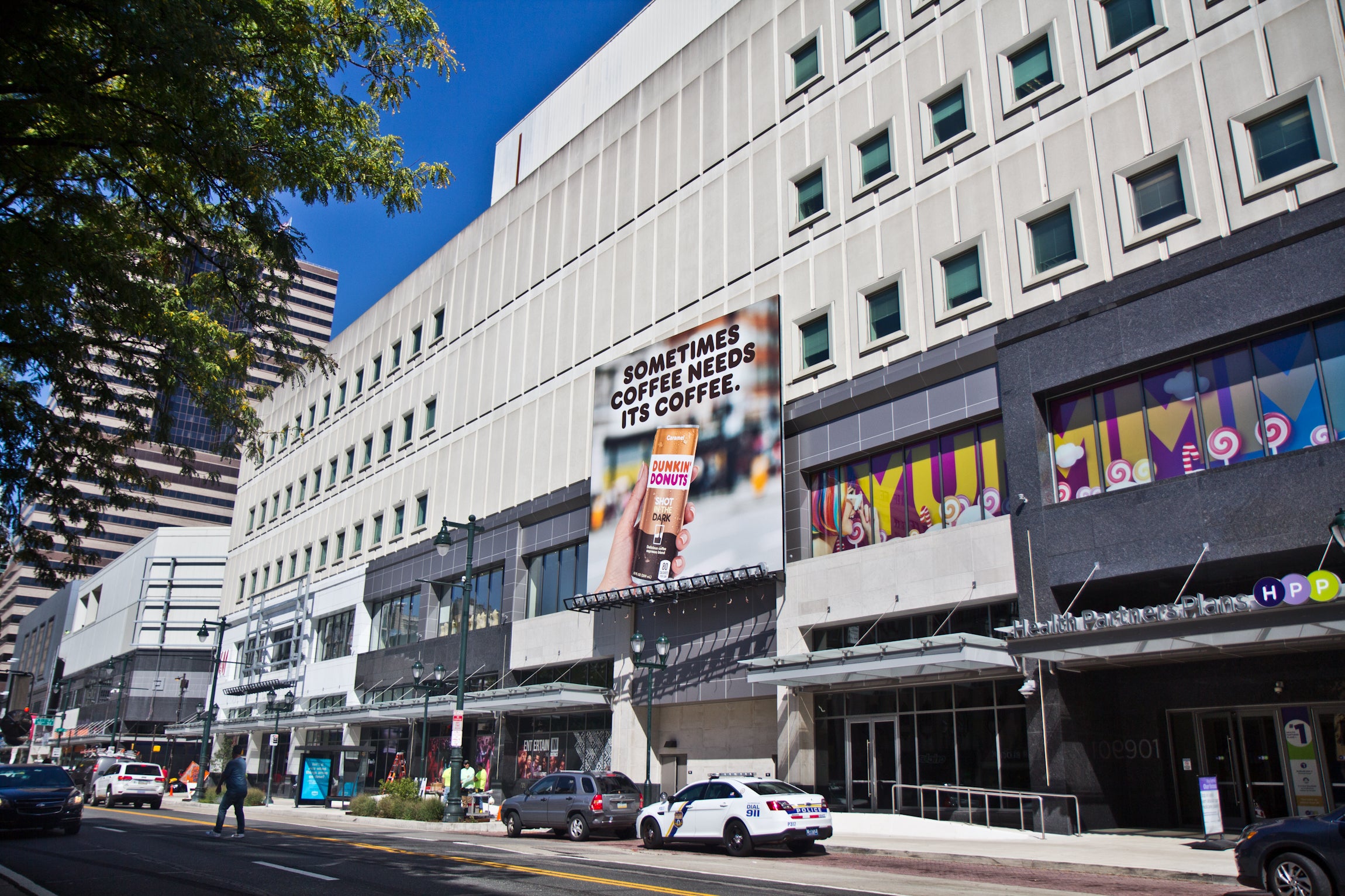
Acts of lazy redevelopment, as exemplified by the Gallery
First things first: It’s called the Gallery, and it always will be. It’s a small thing, but the absurd name change to Fashion District Philadelphia is reflective of many problems that make the $400 million renovation of Philly’s downtown mall, the poster child of lazy upmarket redevelopment.
Co-owners PREIT and Macerich Co. took out most of the discount stores, threw white tile over everything, gave it a corny but upscale-sounding name, and called it a day. But the bigger problems always lay with the structure itself: the M.C. Escher nightmare of cascading escalators on the inside, the mostly deadening wall along the northern side of Market Street on the outside. We still didn’t get a residential tower that was always meant to help grow the population in an underpopulated section of Center City.
The overhaul got some things right. The mall operator scored major anchor tenants. Center City has a major-run movie theater now. Some locally owned businesses were invited to spice up the tenant mix –– although the string of local boutiques are squirreled away in a few retail bays in the lowest level of the mall. But the overarching strategy was mainly to purge the old character in favor of more King of Prussia-grade blandness and let the surging Center City market take care of the rest.
PREIT CEO Joe Coradino summed up it adequately when asked by Inquirer architecture critic Inga Saffron why the company didn’t even bother to reclad the upper floors of the building: “We didn’t think it was worth it.” In other words: None of you would notice anyway.
That’s exactly the wrong mentality in a city that is being constitutionally reshaped by big-money developments. In many ways, the new Gallery is the macro version of the uninspired and nominally upscale ‘fast-casual’ apartment-retail complexes and boxy-bay-window-and-roof-deck rowhouse clones multiplying in gentrifying neighborhoods.
So the mall on East Market embodies a kind of development we hope Philly sees less of in 2020: the lazy kind. Thank you, next.
PennDOT treating Philly like a highway
PennDOT has historically treated bicyclists and pedestrians as squishy inconveniences to the awesome forward momentum of cars. Philadelphia and other urban areas present a singular challenge in that they are just chock full of these human jersey barriers, always scuttling about on primitive “feet” or rolling around on some lame, non-motorized conveyances.
This car-first mentality seems to follow PennDOT engineers across this city. In the past, the agency tried removing traffic lights from a densely populated section of Overbrook to speed traffic, but elderly neighbors complained about the threat to safety. The agency also tried valiantly to resist Fishtown neighbors who wanted safety features installed at a dangerous intersection, forcing residents to wage a multiyear campaign just to get a crosswalk installed.
This year, PennDOT embarked on the $13.3 million rebuild of the Grays Ferry bridge, and, of course, people wanted it to add barriers to the bike lanes because the span “is so wide and carries so little traffic that it induces drivers to go 50 miles-per-hour.” To PennDOT, this was more nerd talk, but life is about compromise. So the agency added a barrier between the bike lane and the traffic on one side of the bridge. The other side is still set up so guys with Dodge Chargers can whip doughnuts through the bike lane and make, like, a college professor or something fly off his Brompton bike and into the Schuylkill.
Apparently, that’s just what traffic engineering is to PennDOT: sticking it to lame nerds. We’d like to see that change in 2020 and the agency embrace some other forms of transportation besides cars.
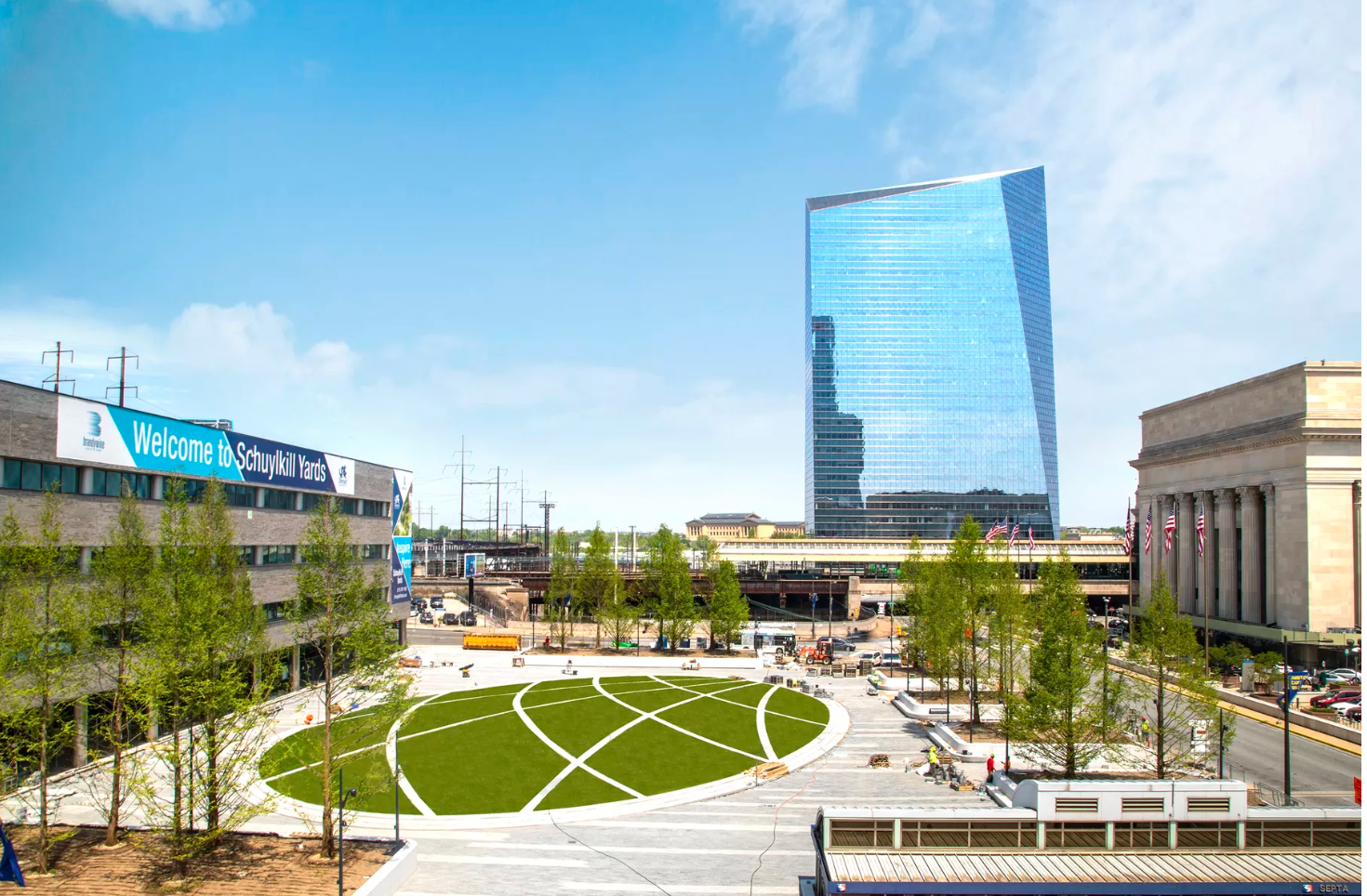
Copycat circle parks
Modern American public spaces are afflicted with a mysterious disease. The telltale sign is the appearance of a large circular formation, usually formed out of stone or gravel. Entire parks and plazas have seen more benign shapes like the gentle rhomboid or elegant crescent quickly overwhelmed by the mighty circle.
The restored northwestern corner of Logan Square? Covered by a pustulant circle. The overhaul of LOVE Park? An ovoid bubo. Drexel Park? Big ol’ circle.
The latest documented case (irony of ironies) is Drexel Square. This, incredibly, isn’t the exact same thing as Drexel Park, but another plaza a few blocks away. Built by Brandywine Realty Trust as part of its multibillion-dollar Schuylkill Yards redevelopment project, the company sank nearly $14 million on a 12,000-square-foot plaza between 30th Street Station and several core properties that are part of the ambitious plan to densify the blocks around the storied Amtrak station.
There is an obvious cure in simply not making the centerpiece of every new public space a weird circle. But the deeper, underlying problem is lazy, copycat landscape design that seems to strongly correlate with the corporatization of “public” space. Even projects free of dreaded circles, like Philadelphia’s new Rail Park, feature many of the stale elements found in projects across the country: gray stonework, familiar postindustrial flourishes, and a seeming hostility to humans actually using the space for more than 15 minutes at a time.
The crisis of cities in the 20th century was existential. The dual urban crises of the 21st century are less terminal but more pernicious: a crisis of exclusion and a crisis of homogeneity. Public projects should strive to subvert both.
WHYY is your source for fact-based, in-depth journalism and information. As a nonprofit organization, we rely on financial support from readers like you. Please give today.




